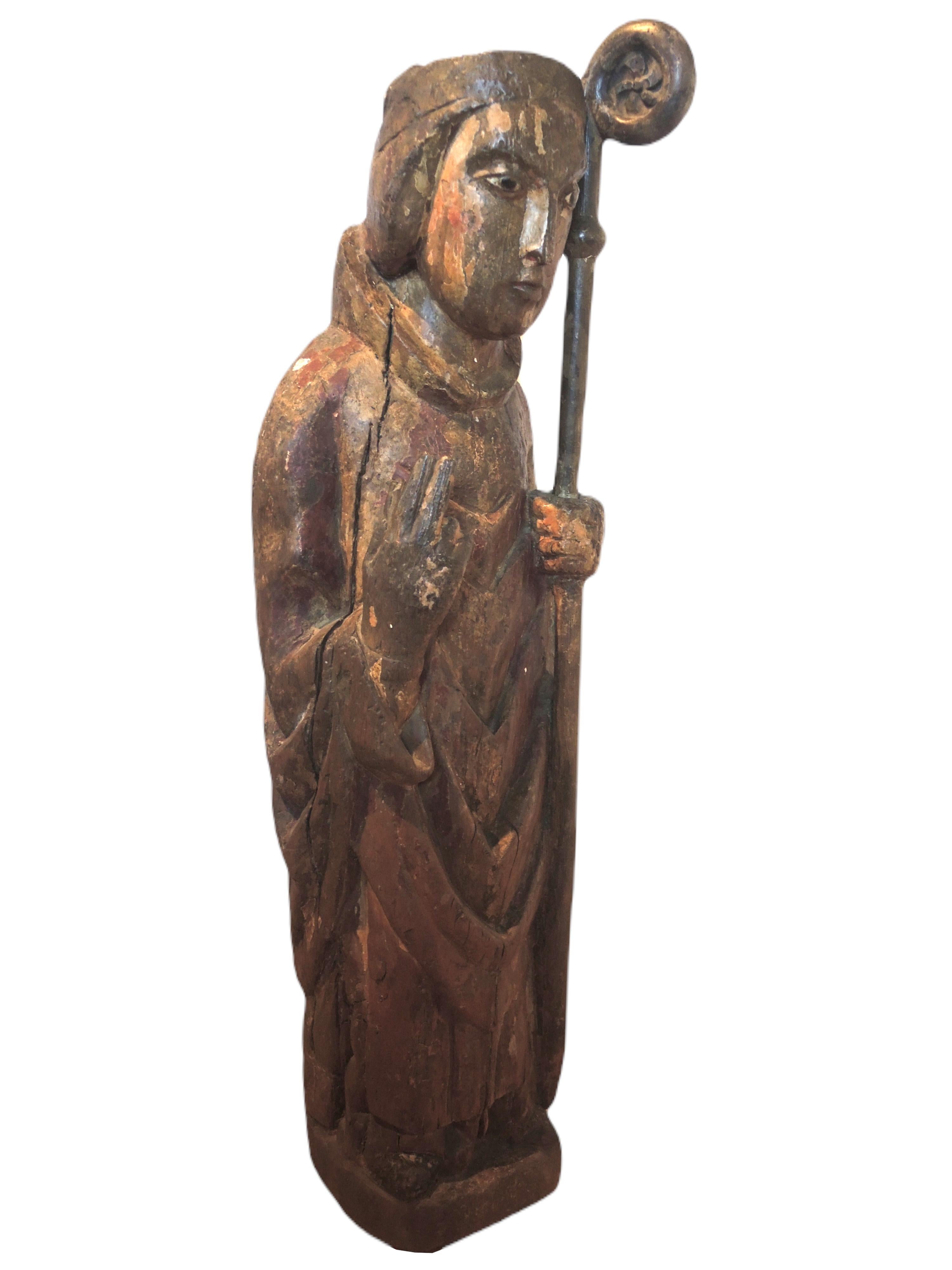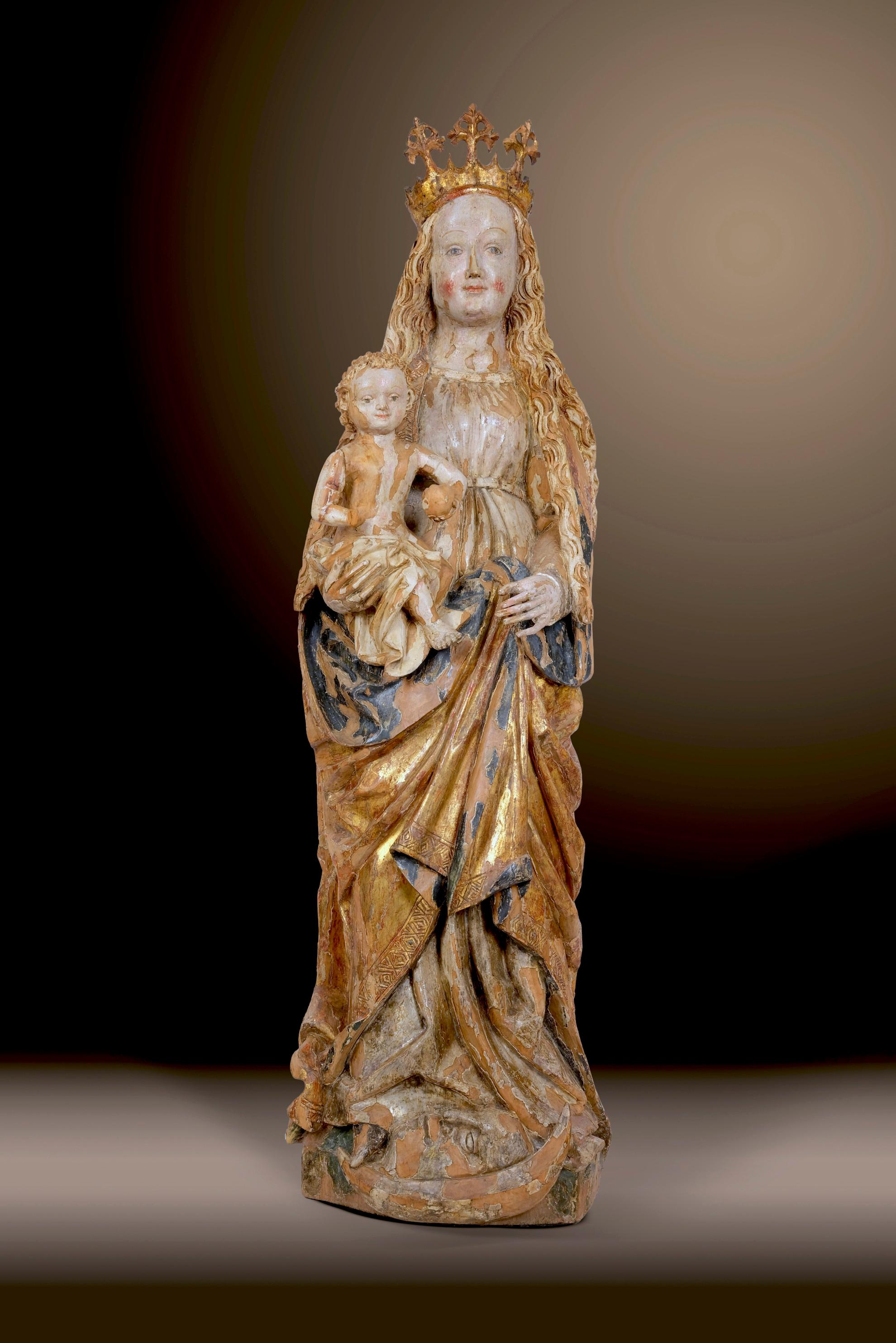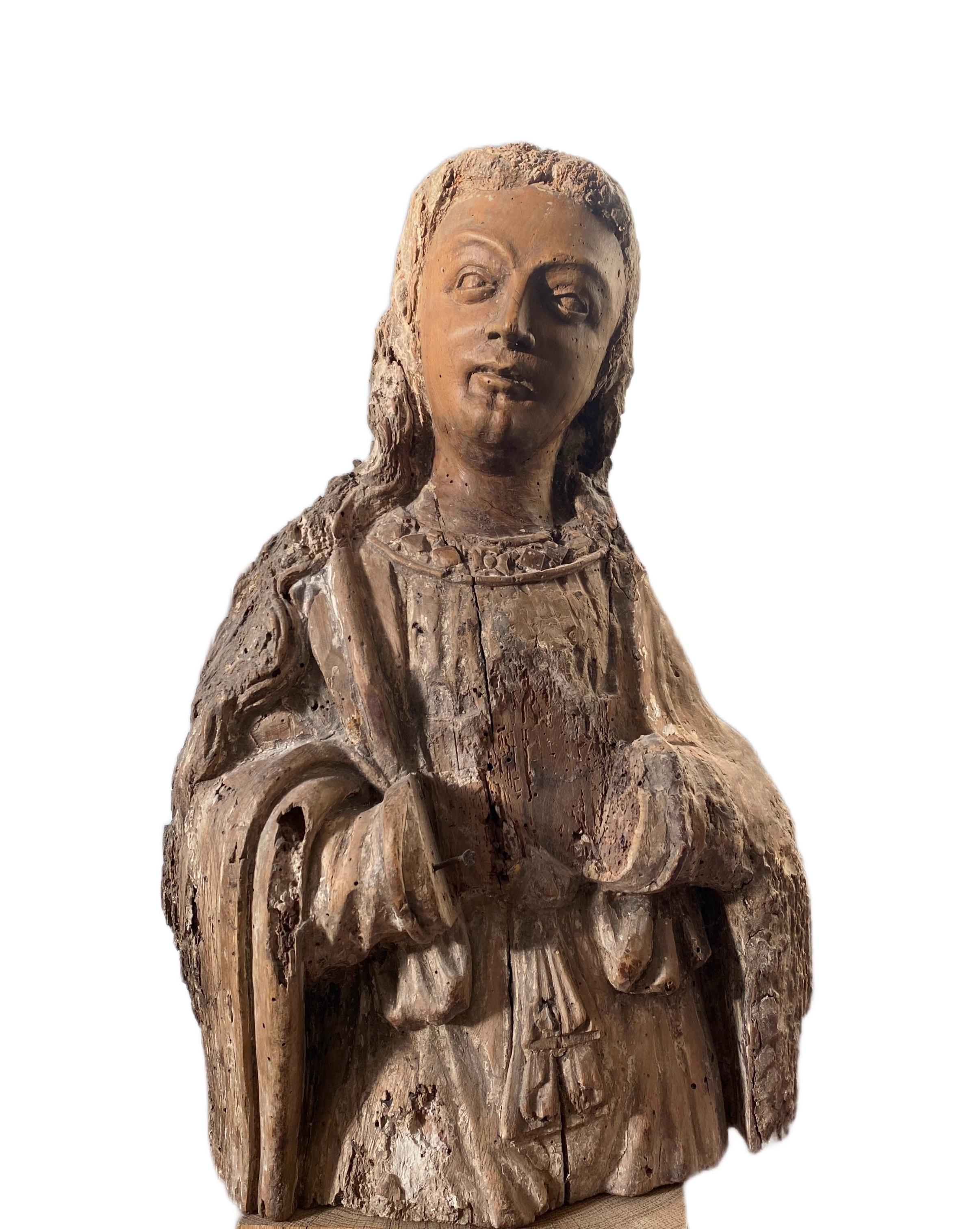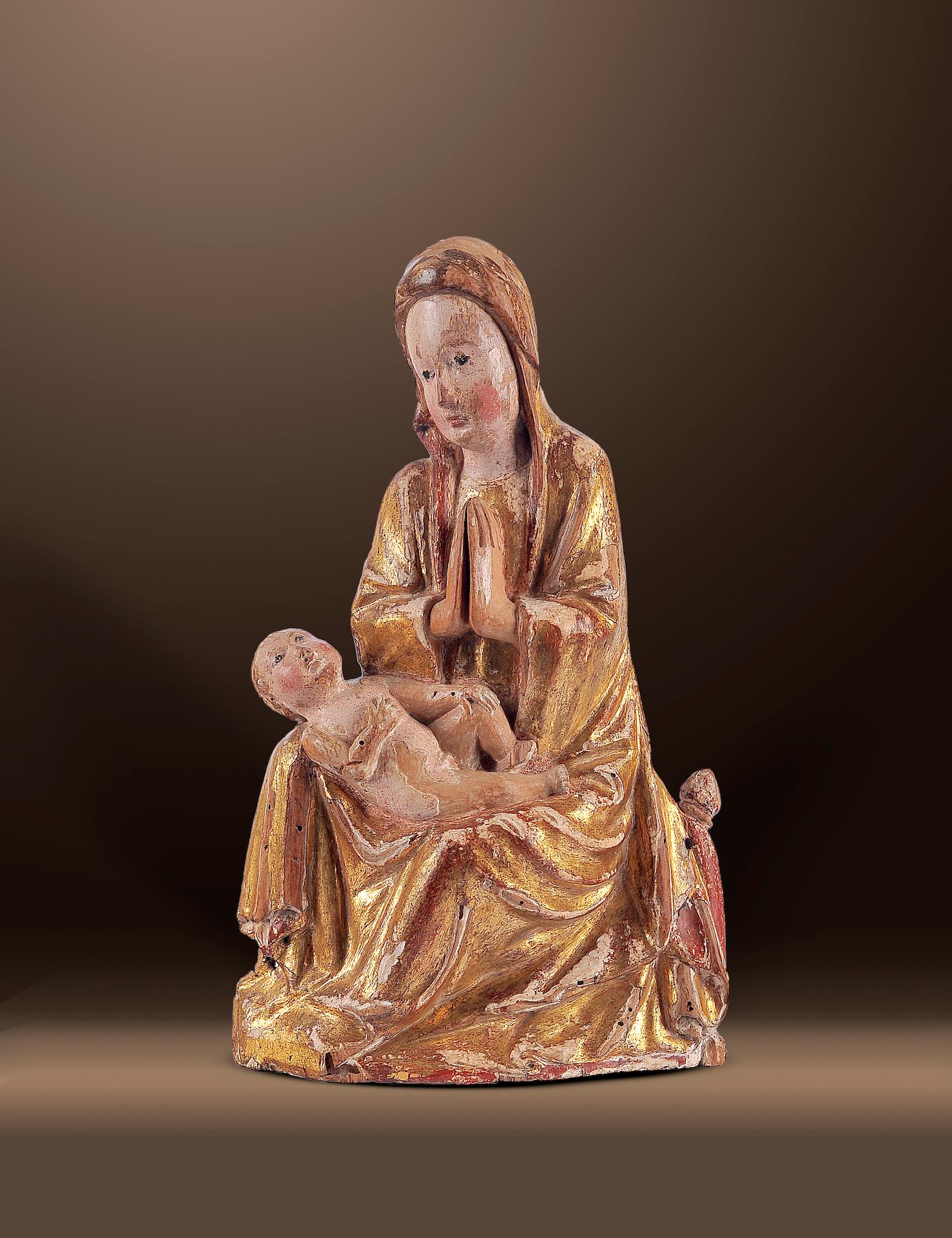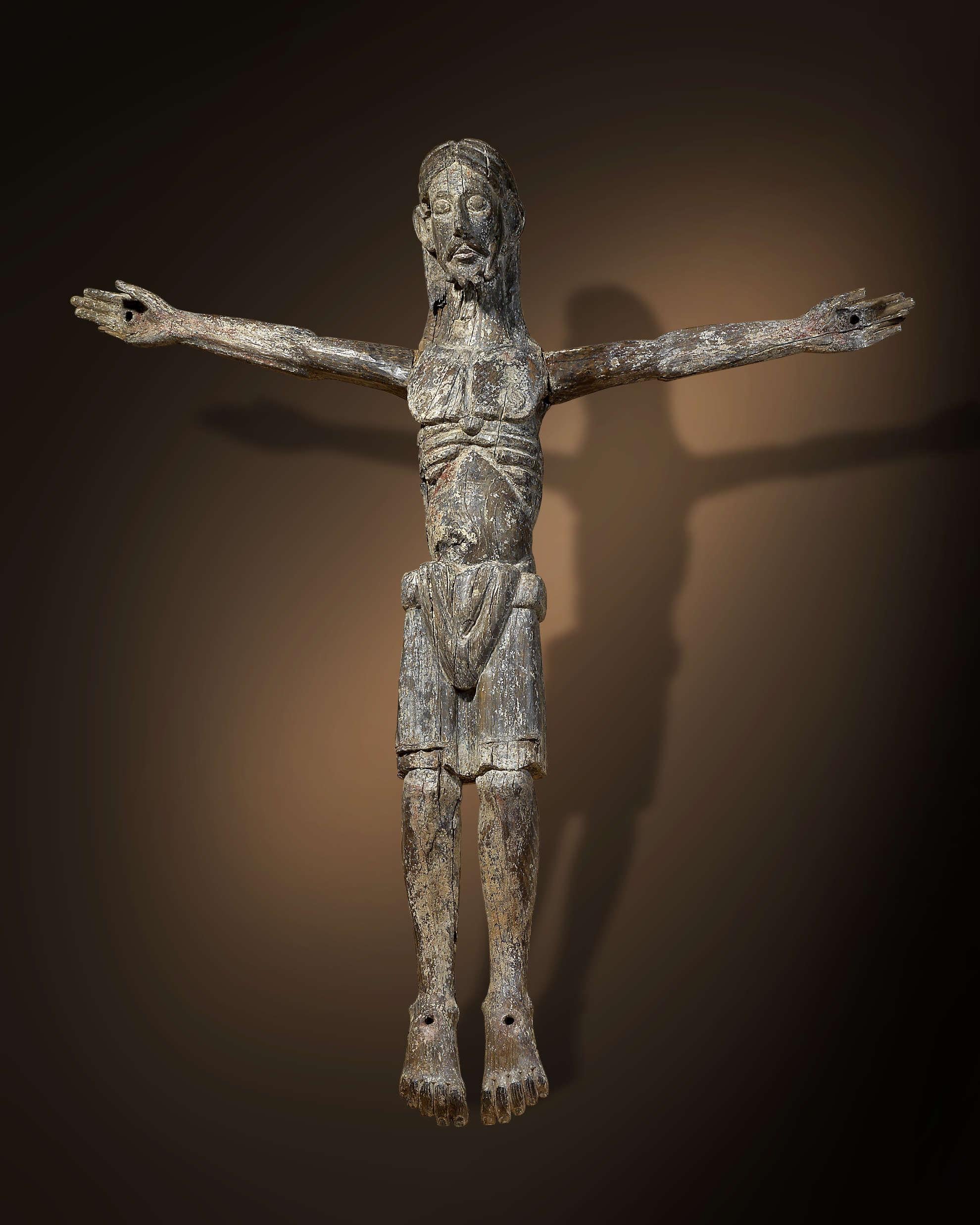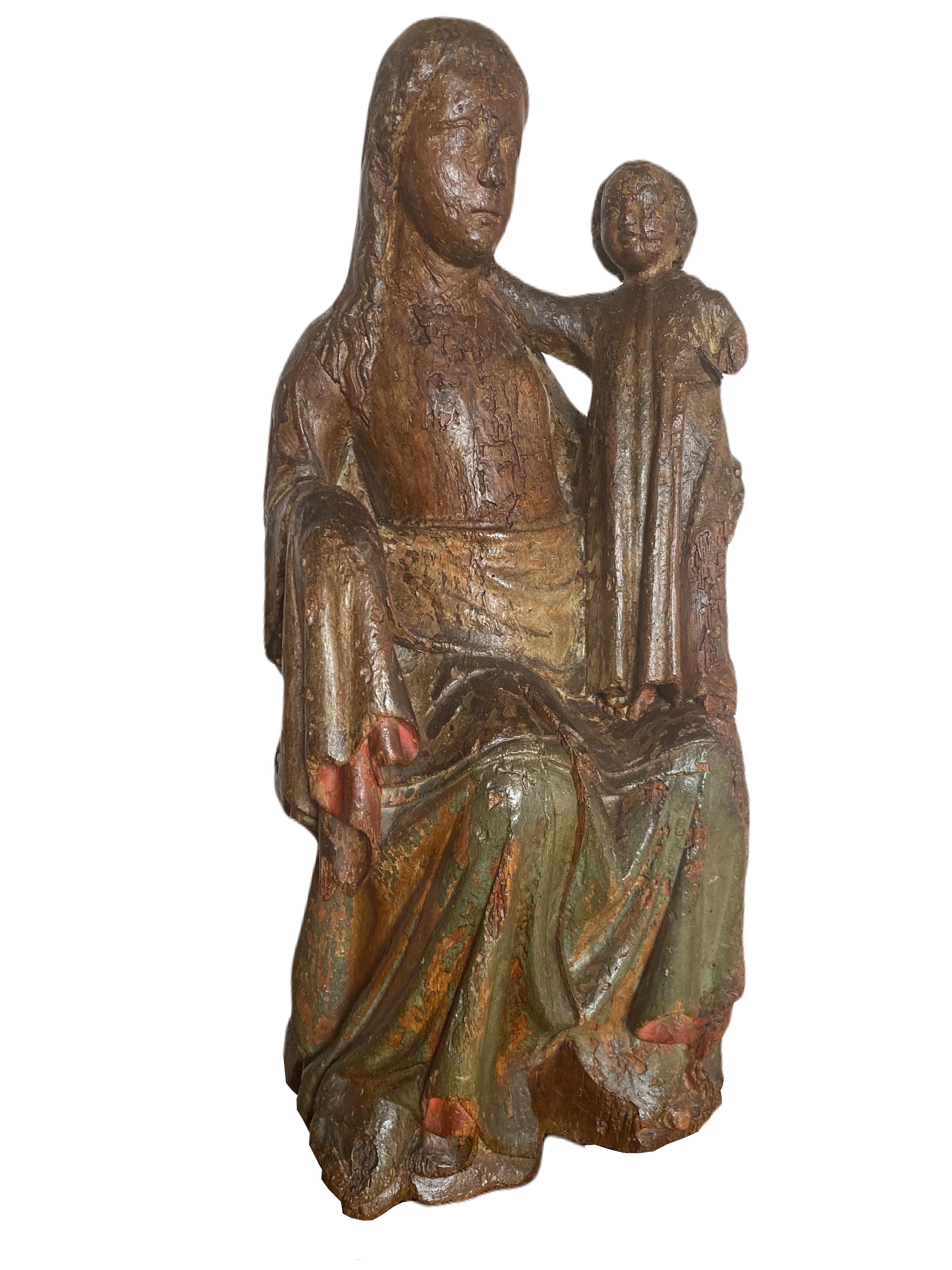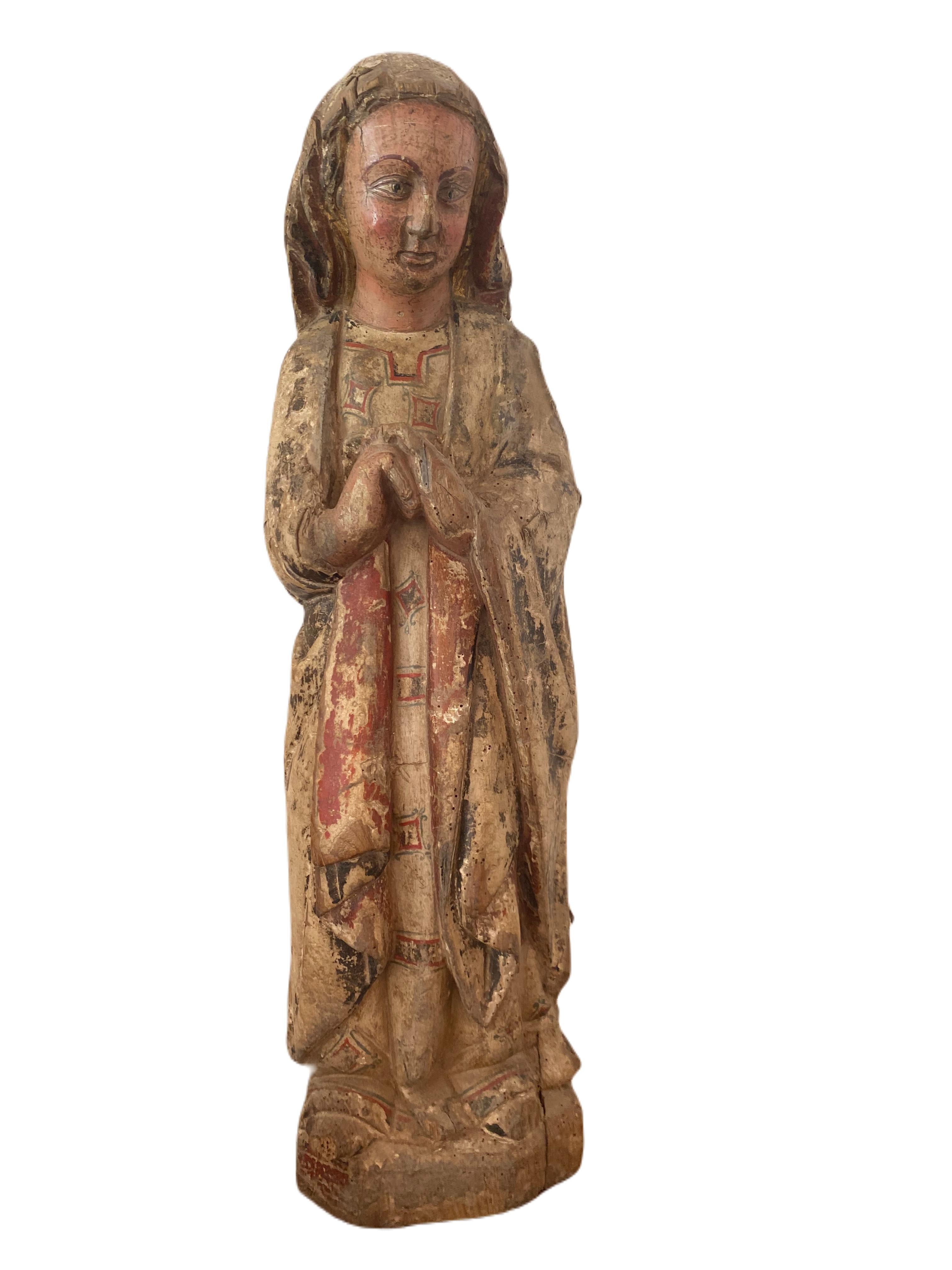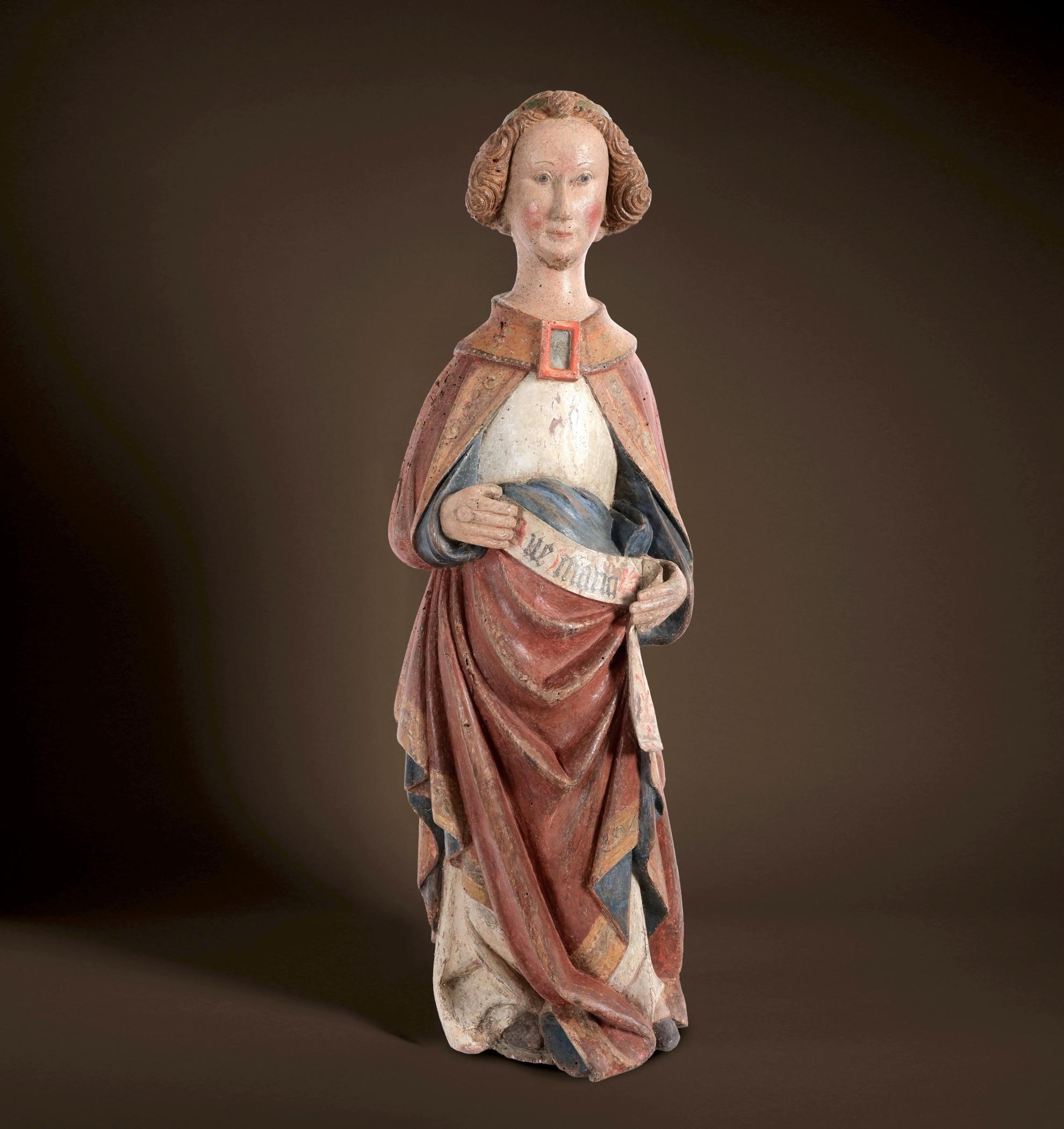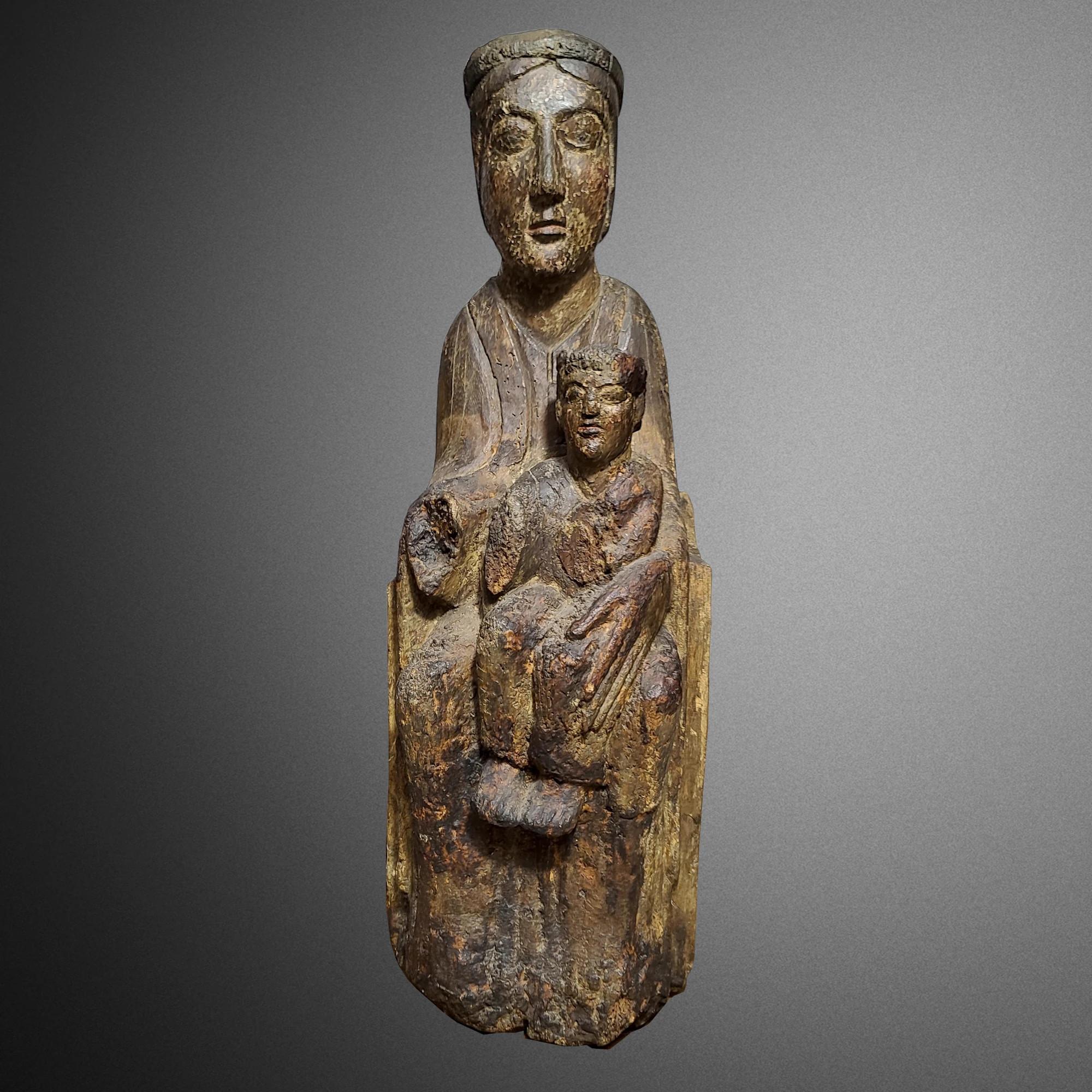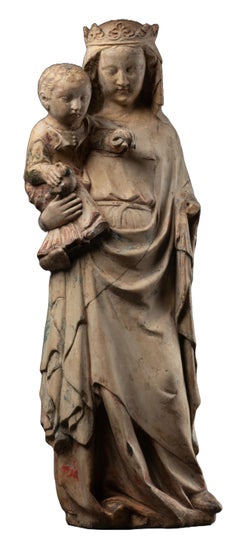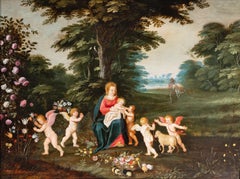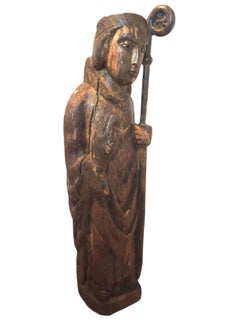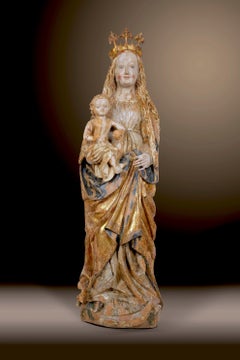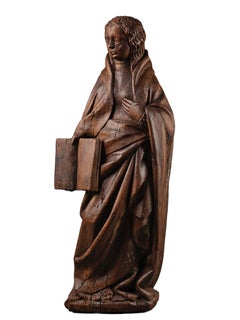
Virgin of the Annunciation, Burgundy, early 15th century
View Similar Items
Want more images or videos?
Request additional images or videos from the seller
1 of 15
Virgin of the Annunciation, Burgundy, early 15th century
About the Item
- Dimensions:Height: 23.62 in (60 cm)Width: 9.84 in (25 cm)
- Medium:
- Movement & Style:
- Circle Of:Claus de Werve (Dutch)
- Period:
- Condition:
- Gallery Location:PARIS, FR
- Reference Number:1stDibs: LU2433214004942
About the Seller
No Reviews Yet
Vetted Professional Seller
Every seller passes strict standards for authenticity and reliability
1stDibs seller since 2023
15 sales on 1stDibs
Typical response time: 1 to 2 days
Authenticity Guarantee
In the unlikely event there’s an issue with an item’s authenticity, contact us within 1 year for a full refund. DetailsMoney-Back Guarantee
If your item is not as described, is damaged in transit, or does not arrive, contact us within 7 days for a full refund. Details24-Hour Cancellation
You have a 24-hour grace period in which to reconsider your purchase, with no questions asked.Vetted Professional Sellers
Our world-class sellers must adhere to strict standards for service and quality, maintaining the integrity of our listings.Price-Match Guarantee
If you find that a seller listed the same item for a lower price elsewhere, we’ll match it.Trusted Global Delivery
Our best-in-class carrier network provides specialized shipping options worldwide, including custom delivery.More From This Seller
View AllLimestone figure of Virgin and child, Lorraine, 14th century, French Gothic
Located in PARIS, FR
Virgin and Child with Goldfinch
Workshops of Metz, Lorraine, circa 1330
Limestone carved in the round with remains of polychromy
Height: 61 cm
The sculpture of the Virgin and Child ...
Category
15th Century and Earlier Gothic Figurative Sculptures
Materials
Limestone
A late 17th Italian carved limewood figure of Mermaid, circle of Filippo Parodi
Located in PARIS, FR
A late 17th c. Italian carved figure of Mermaid,
Circle of Filippo Parodi (Genoa, 1630 – July 22, 1702)
Dimensions: h. 29.13 in, w. 30.31 in, p. 18.9 in (at the base)
Magnificent Italian Baroque sculpture depicting a mermaid seated on the rock.
All the virtuosity of the sculptor unfolds in this carved group. The fantastic creature is featured seated, the upper part of the body darting forward, the head looking upwards. Sophisticated hairstyle with rows of pearls intertwined in her hair, her loose locks fly in the wind and bring movement to the whole sculpture.
The wide-open eyes with hollowed-out pupils make it possible to follow the mermaid's gaze, towards the sky. The half-open mouth further magnifies this bewitching and seductive attitude.
Its long double tail ending in fins wraps on either side of a rocky mound strewn with objects evoking the underwater world: seashells and shells, branches of coral.
The ornamental richness combined with the great care taken in its execution make it a work in which the splendor of Italian Baroque art unfolds in such characteristic scenic movement.
The composition betrays a strong influence from Filippo Parodi, the leader of Genoese Baroque sculpture, and points to an artist from his circle.
Our sculpture was probably part of a decorative monumental palace.
The iconographic theme evoking the marine world finds its application in the numerous fountains and artificial grottos, designed in Italian palaces at the turn of the 17th and 18th centuries.
Giacomo Filippo Parodi (Genoa 1630 – July 22, 1702) was an Italian Baroque sculptor of the Genoese school, who introduced Bernini's aesthetic to Genoa.
In his youth fathers a first apprenticeship with a carpenter, he went to Rome where he became a pupil of Bernini.
He had the opportunity to admire in person the works and style of the French sculptor Pierre Puget...
Category
Late 17th Century Baroque Figurative Sculptures
Materials
Wood
$20,501 Sale Price
20% Off
Attributed à H. Francken II, 17th c. Anwerp - The prodigal son among courtesans
Located in PARIS, FR
The Prodigal Son Among Courtesans
Attributed to Hieronymus Francken II (Antwerp 1578-1623)
Early 17th century Antwerp school
Oil on oak panel,
Dimensions: H. 52.5 cm (20.67 in), W. 74 cm (29.14 in)
Flemish-style moulded wood frame
Frame: h. 78 cm (h. 30.70 in.), w. 100 cm (39.37 in.)
At first glance, this festive and joyful painting depicts a group of elegantly dressed people dancing to the sound of an orchestra in a richly decorated interior with a wide opening onto a rural exterior. However, the real theme is cleverly concealed by the painter and is only discernible through the artifice of a small scene in the background where we see a half-naked man, in the company of the pigs next to a makeshift shelter.
In fact, beyond the pleasant and apparently superficial character of the painting, it is a subject taken from the parable of the prodigal son in the Gospel. The illustrated episode is the prodigal son among courtesans.
Even if the viewer's attention is drawn to the central couple (prodigal son embracing a pretty courtesan) doing the dance steps, the artist takes care in a narrative approach of all the groups and ancillary scenes in order to create a rich and varied composition. Thus the musicians seated on a raised platform are depicted with great skill, their faces animated, their clothes abundantly varied.
The theme of music, which has always been associated with that of sensuality and physical love, helps to exacerbate licentious pleasures.
The merry company dances "Spanish pavane", a slow court dance from the sixteenth century, danced close to the ground by couples arranged in a procession, which was probably introduced to the south of the Netherlands around 1600 during the governance of Albrecht VII and the daughter of the King of Spain Isabella Clara Eugenia in Brussels.
The interior of the house is also carefully elaborated, the embossed leather dyes on the walls, the middle sideboard (typical in Francken interiors), where the rich gold and silver crockery is placed in front of the painting "Andromeda chained to the rock and Perseus arriving to rescue her". The inclusion of a contemporary and probably extant pictorial work is also one of the characteristics of the Francken family, among them Frans Francken the Younger...
Category
Early 17th Century Old Masters Interior Paintings
Materials
Oak, Oil
Rest on the Flight into Egypt - Attributed to Pieter Van Avont - 17th c. Flemish
By Pieter van Avont
Located in PARIS, FR
Rest during the Flight into Egypt - The Virgin and Child with St. John the Baptist and the angels in a Landscape.
Attributed to Pieter Van Avont (1600-1652)
17th century Antwerp School, circa 1630
Oil on oak panel,
Dimensions: h. 38 cm, w. 50 cm (14.96 in x 19.68 in)
Flemish style frame in ebonized and moulded wood
Framed: h. 56 cm, w. 68.5 cm (22.04 in. x 26.97 in.)
In the heart of a lush wooded landscape, the Virgin with Jesus rests in a green clearing accompanied by Saint John the Baptist and the cherubs. Seated to the left of the composition, the Virgin Mary holds the Child on her lap; the little Saint John the Baptist wearing the camel-skin tunic (his attribute) stands before Jesus to exchange a few caresses. On the right, the couple of cherubs are playing with the lamb of Saint John the Baptist, bringing a jovial character to the scene. A pair of gardening putti on the left pick flowers to bring bouquets to the Virgin and Jesus. Spring flowers such as tulips, daffodils and anemones that grow abundantly around them and enrich the composition with their shimmering colors. A lush rose bush blooms to the left of the figures offering delicate roses. (The rose is the flower associated with the Virgin Mary, who is the "mystical rose," the one that does not bear the "thorn of sin")
At the feet of the Virgin are bunches of grapes (symbol of the future passion of Christ) as well as apples (symbol of the original fall of Man but also of the Redemption in Christ) In the foreground we find a wicker basket filled in profusion with beautiful flowers and guinea pigs nibbling on the blades of grass. In a cleverly arranged disorder, these elements of the still life with their strong symbolic power accentuate the religious theme, but are also an opportunity for the artist to demonstrate his know-how in the still life genre that is gaining momentum in Antwerp. The landscape behind the figures consists of a large tree with a twisted trunk and a luminous opening to the horizon placed on the right. We see Saint Joseph arriving with a donkey, a small reminder from the artist that the composition is associated with the episode of Rest during the flight into Egypt.
The calm expanse of this bucolic forest opening onto the luminous distance, with its profusion of symbolic flowers and fruits, is particularly suited to this sacred scene. The theme of Jesus' sacrifice and his tragic fate is mitigated by cherubs who play with innocence and carelessness in the face of the fragility of life symbolized by cut flowers. The great mastery of the painter is manifested by the finesse of the drawing enhanced by the delicacy in the application of the brushstrokes bringing a multitude of details. The richness of the whole is exacerbated thanks to the choice of colours, this varied palette is an undeniable asset of our work.
The virtuosity of our artist lies in his versatility, as much concerned with the success of the landscape and flowers as with the modelling of his figures. The cherubs with their naked bodies are gracefully illuminated by warm colours with subtle shadows, while the still life is rendered with astonishing realism, both in the precision of the drawing and in the countless shades of the flowers.
There are several compositions similar to ours, of which below are the closest versions:
• Sale, Jean-Claude Anaf et Associés, Lyon, 08/02/1998, attributed to Pieter Van Avont, oil on panel, h. 48 cm, l. 71 cm (recorded on RKD n° 31451). Comment: identical composition, only St Joseph with the donkey is different)
• Christie's New York sale, 29/01/1998, Pieter Van Avont, oil on copper, h. 23.8 cm, w. 24.8 cm
• Dorotheum sale, Vienna, 25/04/2017, Pieter Van Avont and Jan Breughel II, oil on copper, h .26 cm, w. 39 cm
• Hermitage Museum, Saint Petersburg, Russia, Pieter Van Avont, oil on panel, h. 50.5 cm, w. 71.7 cm
Peter van Avont, Flemish painter (Mechelen, 1600 - Antwerp. 1652)
Born in Mechelen, he is mentioned in 1620 as a member of the painters' guild of his hometown. He left in 1 622 for Antwerp, where he was also a member of the guild. He collaborated with many painters, including Jan Brueguel the Younger, David Vinckboons, Lucas van Uden...
Category
17th Century Old Masters Landscape Paintings
Materials
Oak, Oil
Crucifixion, Bruges school, Flemish, mid 16th century
Located in PARIS, FR
Crucifixion, cercle of Adriaen Isenbrandt, mid 16th century
School of Bruges, cercle of Adriaen Isenbrandt (actif 1510-1551)
Oil on oak panel with its original ebonized frame
Dimensi...
Category
16th Century Old Masters Figurative Paintings
Materials
Oak, Oil, Wood Panel
Ascension day in Venice by Louis de Caullery (1582-1621) 17th c. Flemish school
Located in PARIS, FR
Ascension Day in Venice
17th century Antwerp School
Louis de Caullery (1582-1621)
Oil on oak panel
Dimensions: h. 12.8 in, w. 23.03 in (h. 32,5 cm, w. 58,5 c...
Category
Early 17th Century Old Masters Landscape Paintings
Materials
Oak, Oil
You May Also Like
Catalan School of the 13th century. Wooden Bishop
Located in PARIS, FR
Catalan School of the 13th century. Bishop statue in polychrome wood.
Large polychrome wooden statue representing a holy bishop carrying a crosier and ma...
Category
15th Century and Earlier Medieval Figurative Sculptures
Materials
Wood
Late Gotic Relief "Adoration of the Magi"
Located in Wien, Wien
LATE GOTIC RELIEF “Adoration of the Magi
Lower Rhine
Around 1500
Oak wood, plastically carved
Original, polychrome version
Height 51 cm, widt...
Category
16th Century Gothic Figurative Sculptures
Materials
Wood, Oak
CRESCENT MOON MADONNA
Located in Wien, Wien
Master in the circle of Michael Pacher
(Mühlen ca. 1435 - 1498 Salzburg)
Salzburg
Around 1480
Carved limewood
Old polychrome version
Height 118 cm
This Madonna is an outstanding ex...
Category
15th Century and Earlier Gothic Figurative Sculptures
Materials
Wood
$168,000
Gothic Renaissance wooden sculpture: bust of a young Saint or Angel
Located in Norwich, GB
This young saint or angel has suffered over the centuries, but his spirit has not been broken - and miraculously, his beautiful face has remained intact. With a gentle face and an al...
Category
15th Century and Earlier Gothic Figurative Sculptures
Materials
Wood
Sitting Madonna
Located in Wien, Wien
Sitting Madonna
Central Italy/Tuscany or Marche
Around 1420
Poplar wood carved
Original version
Height 31 cm
Charming Madonna sculpture from the heyday of the Soft or International...
Category
15th Century and Earlier Gothic Figurative Sculptures
Materials
Wood
Corpus Christi 1150/70
Located in Wien, Wien
Corpus Christi
around 1150/70
Southern France or Catalonia
carved oak wood
height 109 cm, width 96 cm
Remains of polychromy
Category
15th Century and Earlier Gothic Figurative Sculptures
Materials
Wood
